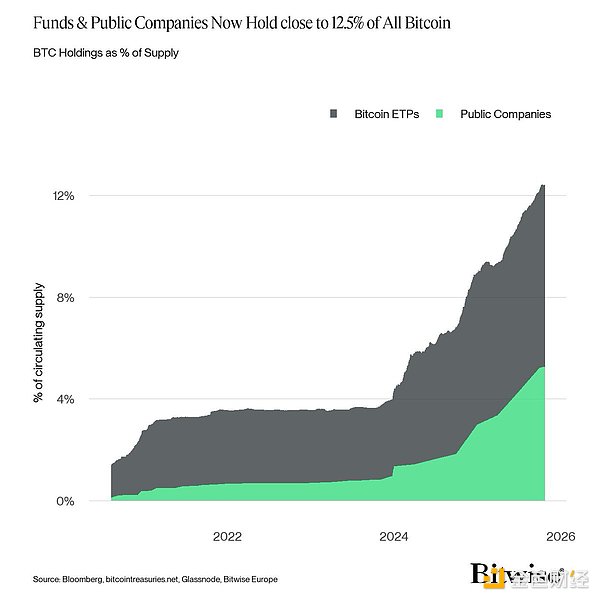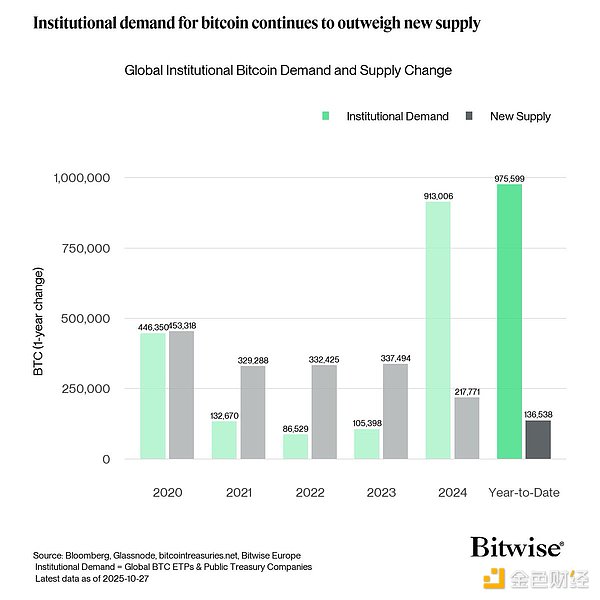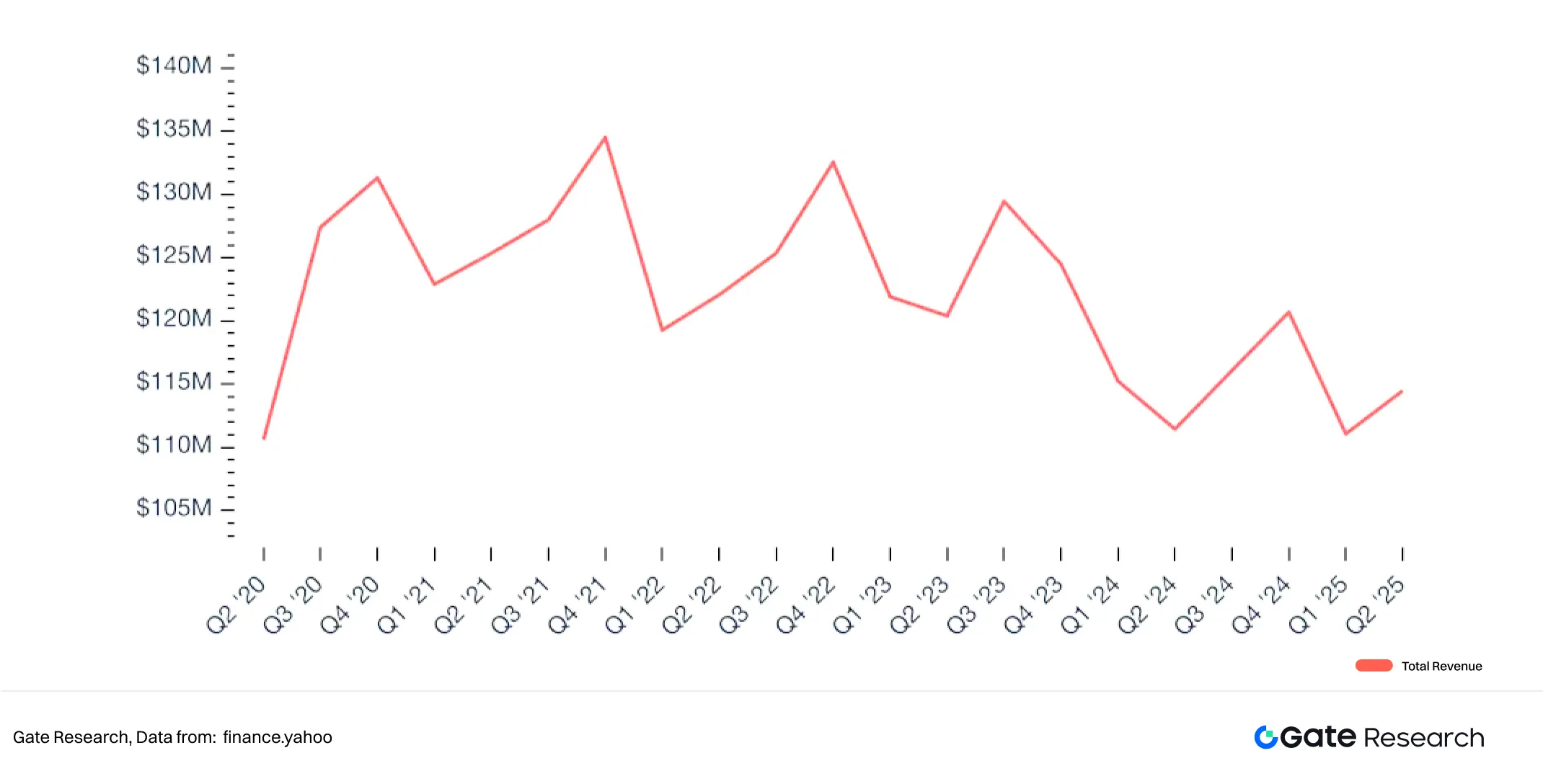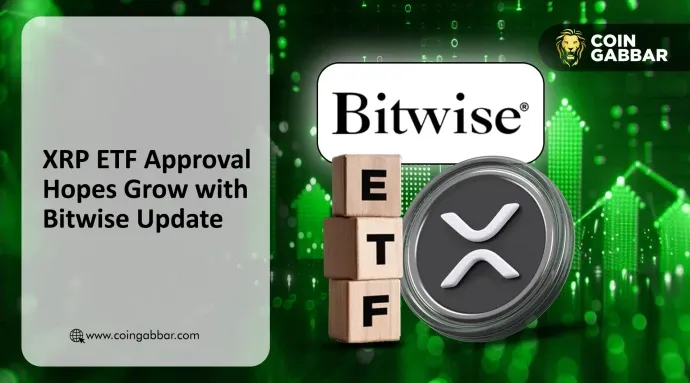Author: André Dragosch, Head of Research for Bitwise Europe; Translation: Jinse Finance Xiaozou
"If in doubt, extend the time frame for observation"
This is the essence of the key chart in our latest Bitwise quarterly market report.

The data clearly reveals the current prevailing trend and even explains the uniqueness of this Bitcoin cycle (data provided by River).
1. Interpreting the Essence of the "Wealth Transfer"
The core point is that Bitcoin is shifting from early retail investors to institutional investors (funds/exchange-traded products), corporations, and even government entities.
Unlike other traditional asset classes in history, Bitcoin's adoption path began with retail investors such as cypherpunks and early participants, followed by the initial involvement of institutional investors like family offices, fund managers, and ETFs.
Even today, retail investors still account for about 66%, meaning the vast majority of Bitcoin is still controlled by non-institutional investors (see the matrix distribution in the above image)! In comparison, the latest data from U.S. 13F filings shows that the allocation ratio of institutional investors in traditional asset classes is significantly higher.
Observing the institutional holdings in mainstream traditional financial ETFs:
- iShares 20+ Year Treasury Bond ETF (TLT) institutional holdings 79%;
- SPDR S&P 500 ETF (SPY) institutional holdings 58%;
- SPDR Gold ETF (GLD) institutional holdings 36%.
In contrast, the latest survey of global fund managers by Bank of America shows that the average allocation to crypto assets (including Bitcoin and other tokens) is only 0.4%. (Supplement: The institutional holding ratio of IBIT is currently only 26%…)
Thus, as the industry often says, "we are still in the early stages," institutional adoption is still in its infancy.
However, it is undeniable that a large-scale wealth transfer from retail to institutional investors is occurring. The migration of wealth from early retail holders to institutional investors will have multiple impacts, the depth of which may be beyond imagination:
2. Bitcoin Adoption: Trends and Cyclical Patterns
(1) Trends
First, it is clear that this transfer will not happen overnight, but is a long-term trend.
The reality is that most Bitcoin is in a non-liquid state, being held long-term. Only about 14.5% of the Bitcoin supply is held in exchanges like Coinbase or Binance, which have relative liquidity, while the rest is stored in off-chain wallets, remaining illiquid.
Without economic incentives, Bitcoin wealth will not automatically transfer.
Many early holders set psychological price points (e.g., $1 million/BTC) or economic goals (e.g., "home purchase funds") as triggers for selling Bitcoin, which are far above the current market price of about $115,000. To attract these illiquid tokens into the market (i.e., exchanges), Bitcoin prices need to rise significantly.
In this process, as ETFs hold assets in trust for millions of individual investors, the adoption of Bitcoin will expand. Public company financial reports also show that it is being held by hundreds of thousands of different investors. As of the writing of this article, institutional investors (ETPs and public companies) control about 12.5% of the Bitcoin supply—and this is still rapidly increasing.

(2) Cyclical Patterns
Most analysts may agree that the early Bitcoin bull and bear cycles were primarily driven by halving events that occur every 210,000 blocks (approximately every 4 years), which reduce the Bitcoin output (hence the term "halving").
However, the impact of halving events is diminishing with each occurrence—both in absolute terms and relative to the circulating supply. As institutional adoption increases and demand structures change, the halving effect has clearly weakened.
Data from 2025 shows that institutional demand has reached about 7 times the supply gap caused by halving!

In this process, the influence of traditional macro cycles has relatively strengthened—Bitcoin has become a true "macro asset."
Our quantitative analysis also indicates that over 80% of Bitcoin price fluctuations in the past 6 months have been driven by macro factors such as global growth expectations and monetary policy, with the impact of token-specific factors being less than 5%.
However, the dominance of macro factors also means that future Bitcoin bull and bear cycles will fluctuate in sync with macro/business cycles, and the four-year cycle driven by "halving" is likely to "fail."
This ultimately indicates that the accumulation and distribution of Bitcoin will depend on the prevailing macro environment (expansion/prosperity vs. contraction/recession), thereby triggering short-term price fluctuations based on risk appetite/risk aversion patterns.
3. Conclusion
The fundamental meaning of the "wealth transfer" is that Bitcoin prices need to reach a higher level—far above the current level—to incentivize further adoption and complete the transition from early retail investors to institutional investors.
The continued influx of institutional investors means that Bitcoin has become a true "macro asset," signaling that future bull and bear cycles will increasingly be driven by macro/business cycles (rather than halving events).
免责声明:本文章仅代表作者个人观点,不代表本平台的立场和观点。本文章仅供信息分享,不构成对任何人的任何投资建议。用户与作者之间的任何争议,与本平台无关。如网页中刊载的文章或图片涉及侵权,请提供相关的权利证明和身份证明发送邮件到support@aicoin.com,本平台相关工作人员将会进行核查。




